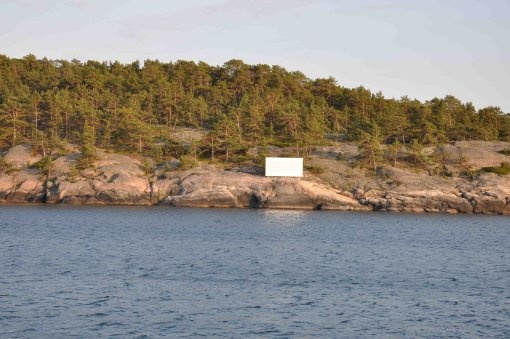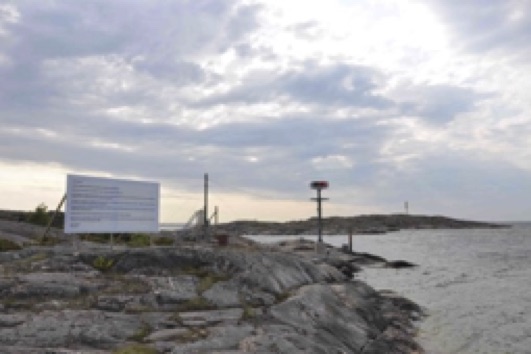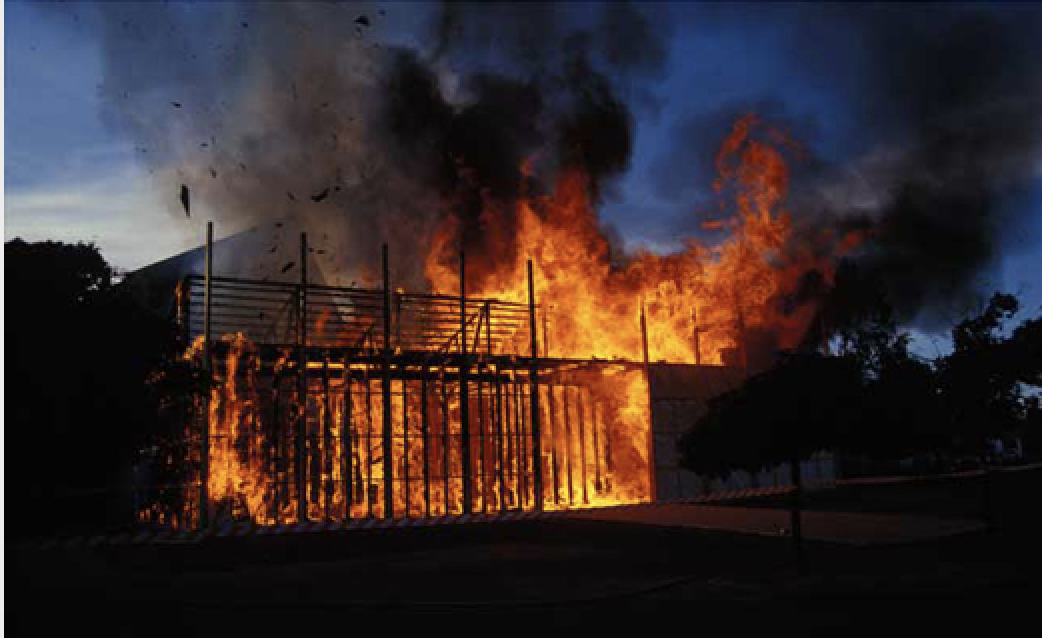
In the spring of 2010, Public Art Interventionist Alfredo Jaar was on the verge of giving up on the commission for Turku, one of six thousand small islands comprising the archipelago in Finland’s Baltic Sea. That year, Turku had been named the Arts Capital of Europe and as he explored the extraordinary, barren and breath-taking landscape by tourist boat and ferry, he was so taken by the beauty that he felt he had nothing to add. And a further dilemma lies in this northern, natural and barely inhabited land: even if he could come up with a work, who would be his audience? …The tourists? The non-local lords of the mansions that punctuated the islets? The residents whose number you could estimate by counting the multi-colored mailboxes at the post office? The bird-watchers? Here I must digress. Jarr just didn’t “get” birdwatchers.
He was simply fascinated by people who would travel thousands of miles to one of the most remote places on the globe to catch a glimpse, through binoculars, of “a single little bird”. On one of his visits, a tourist boat was packed because one phone call to the island had alerted them all of the possible presence of the rare plover he recalled was the columbinus. “They didn’t even want to take a picture! Look at them!” he marveled, totally bemused as slide after slide showed variations and permutations of Jane Hathaways perched over the guardrails, their Bushnells glued to their eyebrows. “What’s so weird about that?” I thought, reminiscing about my own heart-stopping birding moments in South Africa, Venezuela, Zanzibar, Nova Scotia and Iguassu. The most memorable occurred in Costa Rica’s bird watching mecca, the Monteverde Cloud Forest Reserve, where travelling by myself I was missing the company and fellowship of other birders. I was gingerly circling a group from Louisiana, getting the sidelong glances that are reserved for freeloaders when I overhead the renowned ornithologist brief the group on the possible sightings for that morning. I happened to have toured the park at sunrise and politely leaning into the crowd, I offered to lead them directly to the ubiquitous Three-Waddled Bellbird, and then to the Resplendent Quetzal. I was immediately in and adopted for the duration of their stay.
But let’s return to Finland where Jaar was making one of his research trips. It was an early morning in the mist and silence of the archipelago as he sat waiting for a boat to take him on a four-hour journey back from Utö. Upon boarding, he was both perplexed and annoyed that it departed at 5:45. “No wonder this boat is nearly empty” he complained to the captain. “This is the most anti-touristic thing you could do!” The captain chuckled and took him to the seating area on the deck and pointed to a half-asleep teenager sprawled along one of the seats. “We leave at this time because he has to get to school on the main island.” Jarr was so moved that he began to cry at the thought of a country that would place such an investment in a single child. That “happy accident” was the starting point of a work that would reflect a model of society represented by this boat ride and this boy named Markus.
He scrapped all of his other ideas and sent a letter to Finnish intellectuals – journalists, poets, authors, thinkers, musicians – asking them to write a maximum one hundred word letter to Markus on the theme of the boat ride to school. Eleven accepted and their contributions were displayed on “anti-design” white billboards with plain black text representing the letters just as he received them. They dotted the landscape on the route from Utö to Pärnäs. Here’s what a birdwatcher might see through her binoculars:

These are samples of the letters:
Dear Markus
You are living a wonderful youth!
Traveling daily from the safety of your island
towards the great unknown
You travel alone in peace
to the community across the water,
Carrying the strength of your inner world
into the world of others.
Be at home in each one.
Rafl Gothóni, Pianist
Dear Markus
Do not believe in the bad thoughts of
busy people.
Always remain true to yourself.
Remember the sun’s haze in May, the
floating islands.
Remember the granite, the dark cliffs
in November.
You are all these and everything
in between.
Kjell Westö, Author
Hi Markus
In the morning you can see the sea, in the
evening the stars. The story of the universe,
the story of life, the story of humankind, your
story: we are all made of the same stardust,
all part of the shared tale that ascends ever
higher. Every fish is your cousin, every pine
tree on the shore is your kin.
Did you see the sunrise today? Do not believe
those who say the world is heading for destruction. Day is dawning, year after
Year, aeon after aeon. The great story of
humankind is only just the beginning, not ending.
Learn, study, gather knowledge and, through
knowledge, wisdom. A better future is in
your hands.
Esko Valtaoja, Astronomist
